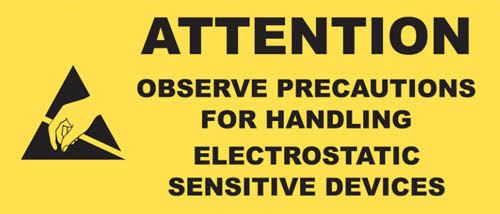 |
What is ESD?
Electrostatic discharge (ESD) is the sudden flow of electricity between two electrically charged objects caused by contact, an electrical short, or dielectric breakdown. A build-up of static electricity can be caused by tribo-charging or electrostatic induction. ESD occurs when differently charged objects are brought close together or when the dielectric between them breaks down, often creating a visible spark.
ESD can cause a range of harmful effects of importance in industry, including gas, fuel vapor, and coal dust explosions, as well as failure of solid-state electronic components such as integrated circuits. These components can suffer permanent damage when subjected to high voltages. Electronics manufacturers, therefore, establish electrostatic protective areas (EPA) free of static, using measures to prevent charging, such as avoiding highly charging materials, and measures to remove static, such as grounding human workers, providing antistatic devices, and controlling humidity.
One of the causes of ESD events is static electricity. Static electricity is often generated through tribo-charging. The separation of electric charges that occurs when two materials are brought into contact and then separated. Examples of tribo-charging include walking on a rug, rubbing a plastic comb against dry hair, rubbing a balloon against a sweater, ascending from a fabric car seat, or removing some types of plastic packaging. In all these cases, the friction between two materials results in tribo-charging, thus creating a difference of electrical potential that can lead to an ESD event.
Many electronic components, especially microchips, can be damaged by ESD. Sensitive components need to be protected during and after manufacture, during shipping and device assembly, and in the finished device. Grounding is especially important for effective ESD control. It should be clearly defined and regularly evaluated. Standardization of regulations is very important if we all want to work at an equal standard. Therefore, IEC 61340-5 version 1 and 2 are leading specifications one can follow as a guideline in avoiding damage by electrostatic discharge.


